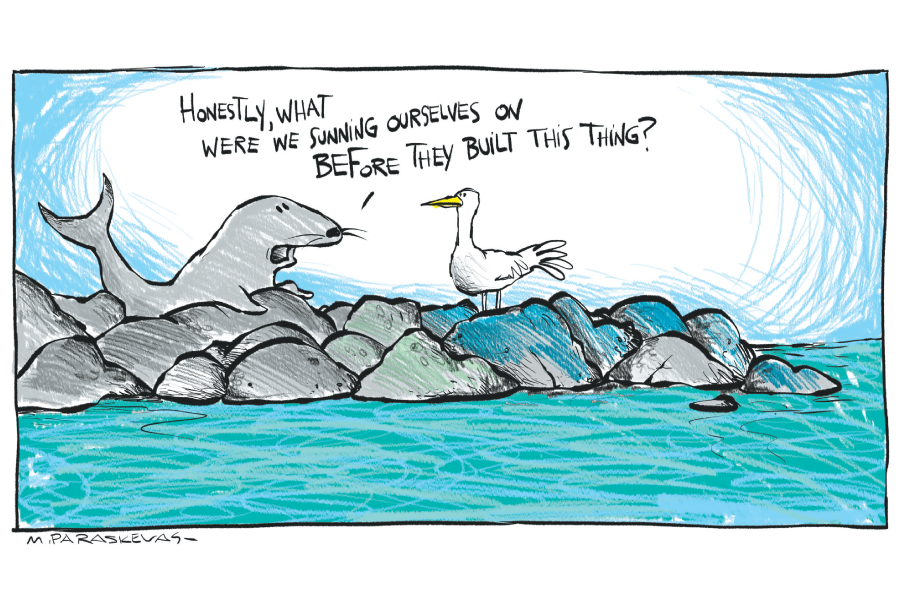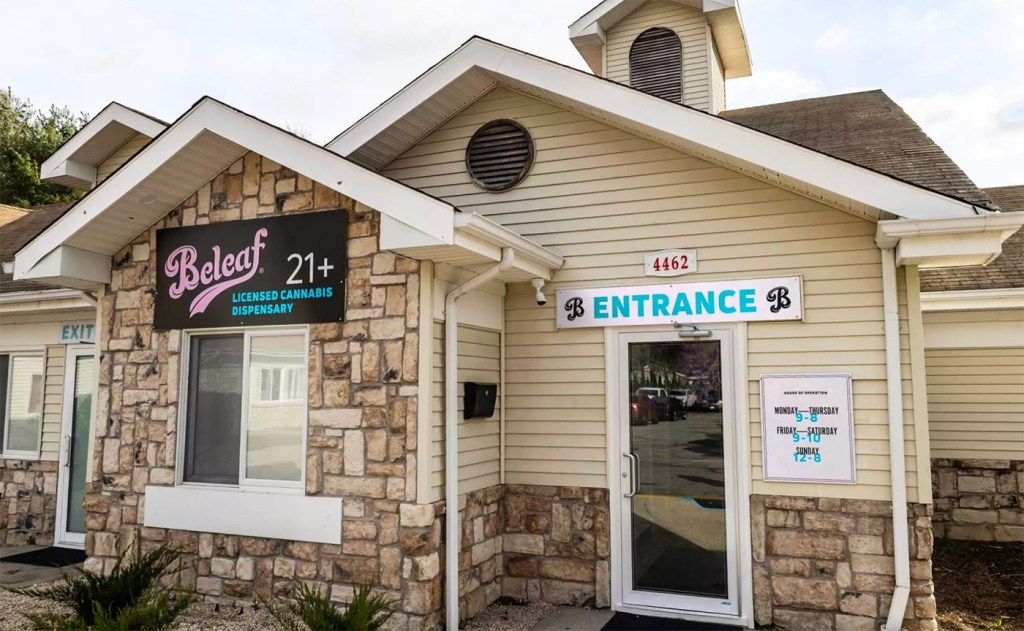Jetties I Have Known: The Amazing History of Hamptons Jetties

Between the ocean beaches and the Long Island Sound beaches, there are about 40 miles of sand in the Hamptons. Along these stretches, there are five places where jetties or groups of jetties jut out into the water. I know quite a bit about all of them, and so, since many of them have been in the news recently, I will describe what I know below
DITCH PLAINS BEACH—1 Jetty
This jetty was constructed by Sam and Bea Cox, the legendary couple from Barbados who built the first motel in Montauk in the early 1950s. Sam proudly showed me his handiwork when I first visited him at his East Deck Motel at Ditch Plains in 1957. There were no zoning laws at that time. So he just had men with trucks and big boulders come in and arrange them in a pile to stick out about 150 yards from the shore. He said it would protect his motel. And it sure has.
It created a buildup of sand along the eastern side of his motel beach. To the west of the jetty, past his motel, however, it carved an indent in the shoreline where the sand was unable to get past the jetty.
By the early 1970s, that curving shoreline made for great surfing. It still does. But it has created difficulties with the properties just to the west of his motel. It has also led to breaches in the dunes and occasional flooding there. I think some of those homes had to be moved back from the shoreline. There was also an inn there, now a private home, but I don’t think that had to be moved.
MONTAUK HARBOR JETTIES—2 Jetties
The jetties at Montauk Harbor were built by Carl Fisher in 1926 after he bought all of Montauk from end to end and tried to transform the 9,000 acres he owned into a beautiful summer resort to match the winter resort in Miami Beach he had developed. His project collapsed in the Crash of ’29, but the jetties he built remained.
Fisher needed a deep-water harbor. There was no deep-water harbor in Montauk then. So he dynamited between the Lake and the Sound to make one, and he lined the opening with the boulders that jutted out into the Sound. This accounts for why what appears to be a harbor is still called “Lake Montauk.”
From time to time during storms, the narrow Sound beach on the western side of the westernmost jetty has caused erosion and flooding because the sand moves east to west and piles up on the East Lake side. In the 1950s when I got here, there was a small motel on the loop road by the western jetty. It was called the Merry Mermaid and it had to be torn down after it was flooded through and ruined with mold. In the 1990s, the state “repaired” the jetties, making them longer and stronger. This was good for the fishermen but bad for the waterfront homes to the west of the cut at Culloden. Some have been shored up to keep them from falling onto the beach. There are lawsuits about this.
GEORGICA JETTY—1 Jetty
Juan Trippe, the legendary millionaire founder and owner of Pan American Airways, had a mansion out at the end of West End Avenue in East Hampton. In the 1950s he built the jetty in front of his house, with the tacit approval of East Hampton Village. What could you do? There was no zoning. He wanted to protect his home.
Fortunately for Trippe, because the drift of sand goes from east to west, the scouring out of beach on his eastern side just helped keep open the cut at Georgica Pond. On the other side of the cut, however, the scouring at Wainscott caused the Kennedy family to move their home back from the beach several times. It has also been blamed for scouring further to the west, causing other people to shore up their homes, but a lawsuit that blamed that jetty for causing this scouring all the way to Bridgehampton four miles away was thrown out by a court. At that distance, a judge ruled, he could not see a direct cause and effect.
SHINNECOCK INLET—2 Jetties
The Hurricane of ’38 opened a cut in the barrier island at Shinnecock that was just too wide to be closed with the available technology of that time. Instead, the cut was made permanent by the government with two strong stone jetties holding it open.
To the east, the sand piled up. To the west, it scoured. There are no oceanfront homes there on the west side, so scouring has gone unnoticed. But on the bay side, the scouring has caused frequent flooding at the restaurant, docks, fish houses and stores there.
WESTHAMPTON JETTY FIELD—12 Jetties
In the 1960s, the politically well-connected County Commissioner of Public Works Herman Bishop got the job of armoring the ocean beach with a string of jetties from the Shinnecock to the Moriches Inlet. All together, there were to have been 23 jetties. This was a huge project expected to take many years. Bishop’s crew started in the middle of this 10-mile stretch and built jetties out to sea at quarter-mile intervals heading west. If he completed this to Moriches Inlet, he would have gotten the job half done.
Bishop had gotten half of those jetties built, 12 in all, when, in the late 1960s, demonstrators and protesters objecting about using taxpayer money to help the rich oceanfront home owners, caused the county, who oversaw the project, to pull the plug.
After that, no more jetties were ever built, but soon, sand piling up on the eastern side of the jetty field created beaches nearly 150 yards wide for those who lived behind them. The sand was getting caught in these
jetties.
To the west of the last jetty, about a mile from the Moriches Inlet, nature attacked with a vengeance beginning around 1990, with the ocean digging out the foundations under hundreds of sand-starved homes, causing them, one at a time, to fall into the ocean. Nobody could do a thing about it. Nobody was killed. But it was a huge catastrophe. Half a mile of oceanfront homes, 190 of them, were gone. A new cut into the bay was
created.
Finally, in 1993, the owners of these underwater properties formed themselves into an incorporated village called the Village of West Hampton Dunes and got the federal government to step in and pile-drive an enormous 60-foot high and 300-foot long steel wall into the seabed to plug up the inlet. On top of the steel they poured sand. And all that they gave back to the homeowners whose properties were therefore no longer underwater, with a promise that every 10 years they would come back and pour more sand in there to top it off and further protect the rebuilt homes above. In that sense, the Village of West Hampton Dunes is an artificial village, dependent upon the government to keep its promises.
Experts are now meeting to decide how to save Ditch Plains from further flooding. Hope they have more brains than those that have come before.



